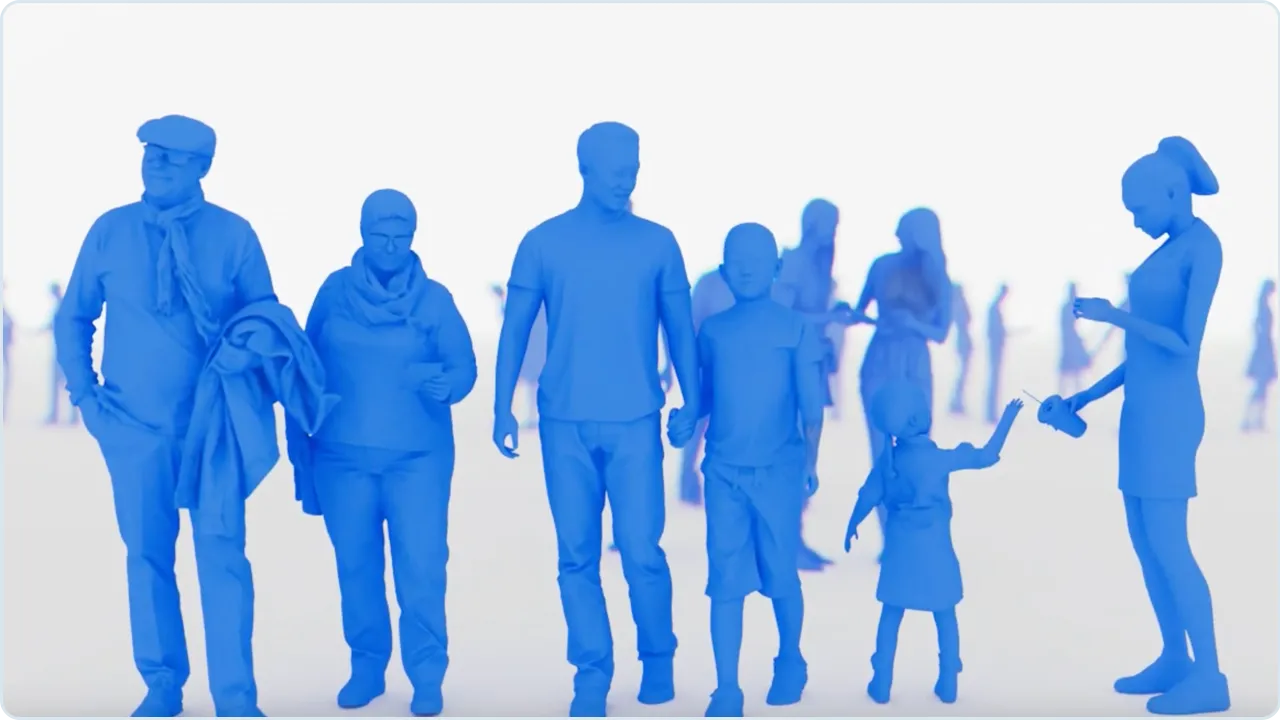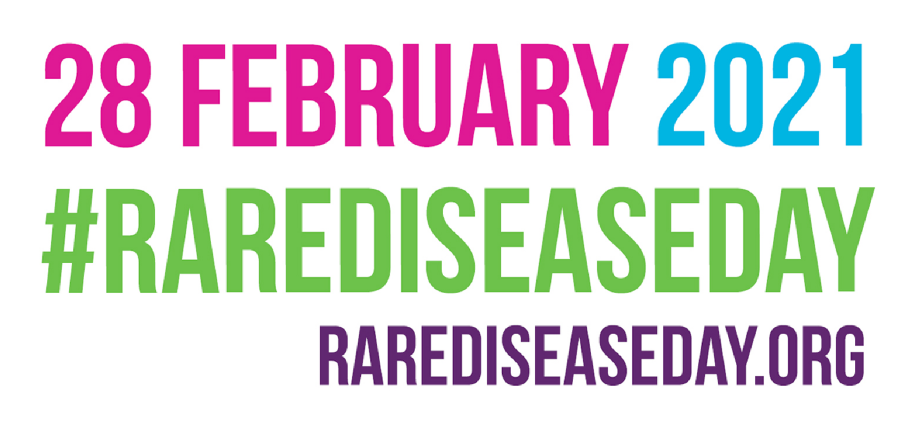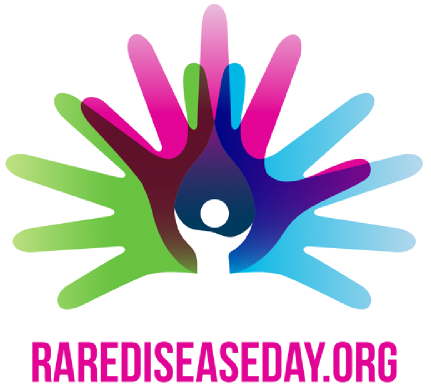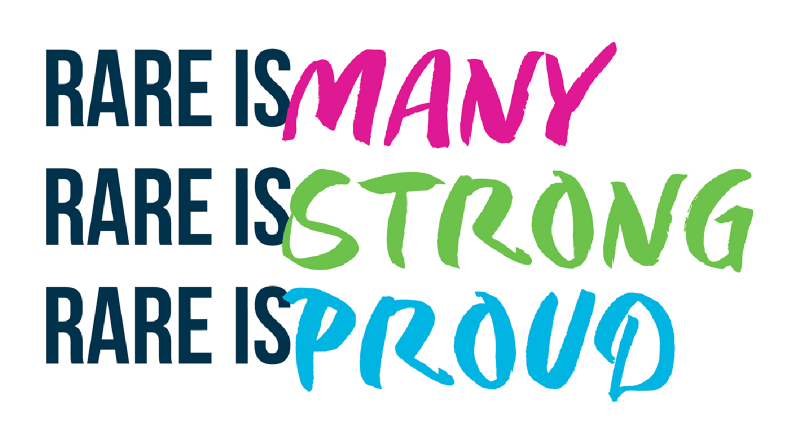We are discovering and advancing life-transforming therapeutics for people living with genetically driven neuromuscular diseases. We have a broad pipeline, including clinical programs for myotonic dystrophy type 1 (DM1) and Duchenne muscular dystrophy (DMD), and preclinical programs for facioscapulohumeral muscular dystrophy (FSHD) and Pompe disease. Each of these serious neuromuscular diseases has a profound impact on affected communities around the world.
We are utilizing our FORCETM platform to deliver therapies to muscle and the central nervous system (CNS), with the goal of stopping or reversing disease progression. In selecting diseases to target with our FORCE platform, we seek those with clear translational potential from preclinical disease models to well-defined clinical development and regulatory pathways.
DYNE-101 an investigational therapeutic for people living with myotonic dystrophy type 1 (DM1)
DYNE-101 is an investigational therapeutic being evaluated in the Phase 1/2 global ACHIEVE clinical trial for people living with DM1. DYNE-101 consists of an antisense oligonucleotide (ASO) conjugated to a fragment antibody (Fab) that binds to the transferrin receptor 1 (TfR1) which is highly expressed on muscle. DYNE-101 is designed to address the genetic basis of DM1 by reducing the levels of toxic DMPK RNA in the nucleus, releasing splicing proteins, allowing normal mRNA processing and translation of normal proteins and potentially stopping or reversing disease. DYNE-101 has been granted orphan drug designation for the treatment of DM1 by both the European Medicines Agency and the US Food and Drug Administration, with the FDA also awarding it fast track designation.
Learn more about DM1 and DYNE-101
About DM1
DM1 is a rare, genetic, progressive muscle disease estimated to affect >40,000 people in the US and >74,000 people in Europe. The severity of symptoms and pace of progression varies.
Onset
Symptoms can begin at any point in an affected person’s life, depending on the DM1 subtype. Adult-onset DM1 symptoms typically appear in early teens to 50 years of age.
Cause
The underlying cause of DM1 is a defective DMPK gene that encodes a mutated RNA. DM1 is known as a triplet repeat disease because of the expanded number of CTG repeats in the DMPK gene. These CTG repeats cause toxic RNA to cluster in the nucleus. The toxic RNA binds to RNA splicing proteins, causing altered splicing events in many other genes. This altered splicing results in a wide range of disease symptoms and contributes to the significant disease burden.
Symptoms
People experience a broad spectrum of symptoms, including:
- Muscle weakness throughout the body, from difficulties with facial and swallowing muscles to hand and grip weakness to lower leg and foot weakness, foot drop and resulting mobility issues
- Myotonia, or difficulty relaxing muscles in the jaw, tongue, throat, lower arm and hand
- Respiratory issues
- Gastrointestinal dysfunction throughout the GI tract
- Cognitive deficits, excessive daytime sleepiness and dysregulated sleep
- Early cataracts
Treatment
There are currently no disease-modifying treatments for DM1.
DYNE-251 an investigational therapeutic for people living with Duchenne muscular dystrophy (DMD)
DYNE-251 is an investigational therapeutic being evaluated in the Phase 1/2 global DELIVER clinical trial for people living with DMD who are amenable to exon 51 skipping. DYNE-251 consists of a phosphorodiamidate morpholino oligomer (PMO) conjugated to a fragment antibody (Fab) that binds to the transferrin receptor 1 (TfR1) which is highly expressed on muscle. It is designed to enable targeted muscle tissue delivery and promote exon skipping in the nucleus, allowing muscle cells to create a truncated, functional dystrophin protein, with the goal of stopping or reversing disease progression. DYNE-251 has been granted fast track, orphan drug and rare pediatric disease designations for the treatment of DMD mutations amenable to exon 51 skipping by the US Food and Drug Administration.
In addition to DYNE-251, Dyne is building a global DMD franchise and has preclinical programs targeting other exons, including 53, 45 and 44.
About DMD
DMD is a rare genetic muscle disease. It occurs primarily in males, although females can be affected and they also pass the genetic mutation onto their children. DMD affects an estimated 12,000 to 15,000 people in the US and 25,000 in Europe.
Onset
DMD is the most common childhood-onset form of muscular dystrophy. Loss of strength and function typically first appear between 3 and 5 years of age.
Cause
DMD results from a genetic mutation in the DMD gene on the X chromosome. This gene regulates the production of dystrophin, a protein essential to healthy muscle development and function. In people with DMD, dystrophin levels are absent or nearly absent, which causes permanent damage to muscle cells.
Symptoms
People living with DMD experience a range of symptoms, which may include:
- Progressive muscle weakness that worsens over time, usually beginning in the upper arms, upper legs and pelvic area and progressing to affect the lower legs, forearms, neck and trunk
- Enlarged calf muscles
- Delays in developing motor skills such as sitting, standing or walking
- Toe walking or waddling gait
- Breathing problems
- Cardiomyopathy, or inflammation of the muscles in the heart
- Varying degrees of cognitive impairment affect approximately one third of patients
Treatment
There are no transformative therapies and no cure for DMD. Thus, there is a significant need for new treatment options for the disease.
DYNE-302 a product candidate for people living with facioscapulohumeral muscular dystrophy (FSHD)
DYNE-302 is Dyne’s product candidate being developed for people living with FSHD. DYNE-302 consists of a fragment antibody (Fab) that binds to the transferrin receptor 1 (TfR1) which is highly expressed on muscle, conjugated to an siRNA designed against DUX4 mRNA. Dyne has generated comprehensive preclinical data supporting its FSHD program demonstrating robust and durable DUX4 suppression and functional benefit in both in vitro and an innovative in vivo model developed by Dyne.
About FSHD
FSHD is a rare disease characterized by progressive loss of skeletal muscle, which causes profound weakness. It is estimated to affect approximately 16,000 to 38,000 people in the US and 35,000 people in Europe.
Onset
There is wide variability in age of onset with FSHD. Symptoms typically begin to appear in the teen years. In some cases, individuals do not begin to experience the muscle weakness characteristic of FSHD until well into adulthood. A very rare form of FSHD, often called infantile FSHD or IFSHD, is particularly debilitating, with symptoms beginning in infancy or early childhood.
Cause
FSHD is caused by aberrant expression of a gene called DUX4. In a healthy individual, DUX4 is active for only a short time in early embryonic development. In individuals with FSHD, the DUX4 gene remains “on” long after it is supposed to be silenced. This activation leads to surplus production of the DUX4 protein, which causes the gradual destruction of muscle cells throughout the body.
Symptoms
The symptoms of FSHD often emerge first with a loss of facial muscle strength, making it difficult to smile or use a straw. Weakness typically progresses to all major muscle groups including the arms, torso, legs, and abdomen and can lead to limited mobility. The severity of symptoms varies widely. People living with FSHD can also experience joint and spinal abnormalities, including protrusion of the shoulder blades.
Treatment
Although the genetic cause of FSHD is well understood, there are currently no approved disease-modifying treatments for FSHD.
Expansion Opportunities
We intend to utilize our FORCE platform to expand our portfolio by pursuing the development of programs in additional indications, including additional rare skeletal, CNS, cardiac and metabolic muscle diseases. By rationally selecting therapeutic payloads to conjugate with our proprietary antibody and linker, we believe we can develop product candidates to address the genetic basis of additional muscle diseases.
Back to pipeline| DISEASE | TARGET | DISCOVERY
PRECLINICAL
PHASE 1/2
|
ESTIMATED PATIENTS |
|---|---|---|---|
| Myotonic dystrophy type 1 (DM1) Myotonic dystrophy type 1 (DM1) Information | DMPK | DYNE-101
|
U.S.: >40,000 Europe: >74,000 |
| Duchenne muscular dystrophy (DMD) Duchenne muscular dystrophy (DMD) Information | Exon 51
Exon 53
Exon 45
Exon 44
Other Exons |
DYNE-251
|
U.S.: ~12,000-15,000 Europe: ~25,000 |
| Facioscapulohumeral muscular dystrophy (FSHD) Facioscapulohumeral muscular dystrophy (FSHD) information | DUX4 | DYNE-302
|
U.S.: ~16,000-38,000 Europe: ~35,000 |
| Pipeline expansion opportunities | |||
| Rare skeletal CNS cardiac metabolic Rare skeletal cardiac metabolic information |
|||
DYNE-101 an investigational therapeutic for people living with myotonic dystrophy type 1 (DM1)
DYNE-101 is an investigational therapeutic being evaluated in the Phase 1/2 global ACHIEVE clinical trial for people living with DM1. DYNE-101 consists of an antisense oligonucleotide (ASO) conjugated to a fragment antibody (Fab) that binds to the transferrin receptor 1 (TfR1) which is highly expressed on muscle. DYNE-101 is designed to address the genetic basis of DM1 by reducing the levels of toxic DMPK RNA in the nucleus, releasing splicing proteins, allowing normal mRNA processing and translation of normal proteins and potentially stopping or reversing disease. DYNE-101 has been granted orphan drug designation for the treatment of DM1 by both the European Medicines Agency and the U.S. Food and Drug Administration, with the FDA also awarding it fast track designation.
Learn more about DM1 and DYNE-101
About DM1
DM1 is a rare, genetic, progressive muscle disease estimated to affect >40,000 people in the U.S. and >74,000 people in Europe. The severity of symptoms and pace of progression varies.
Onset
Symptoms can begin at any point in an affected person’s life, depending on the DM1 subtype. Adult-onset DM1 symptoms typically appear in early teens to 50 years of age.
Cause
The underlying cause of DM1 is a defective DMPK gene that encodes a mutated RNA. DM1 is known as a triplet repeat disease because of the expanded number of CTG repeats in the DMPK gene. These CTG repeats cause toxic RNA to cluster in the nucleus. The toxic RNA binds to RNA splicing proteins, causing altered splicing events in many other genes. This altered splicing results in a wide range of disease symptoms and contributes to the significant disease burden.
Symptoms
People experience a broad spectrum of symptoms, including:
- Muscle weakness throughout the body, from difficulties with facial and swallowing muscles to hand and grip weakness to lower leg and foot weakness, foot drop and resulting mobility issues
- Myotonia, or difficulty relaxing muscles in the jaw, tongue, throat, lower arm and hand
- Respiratory issues
- Gastrointestinal dysfunction throughout the GI tract
- Cognitive deficits, excessive daytime sleepiness and dysregulated sleep
- Early cataracts
Treatment
There are currently no disease-modifying
treatments for DM1.
DYNE-251, an investigational therapeutic for people living with Duchenne muscular dystrophy (DMD)
DYNE-251 is an investigational therapeutic being evaluated in the Phase 1/2 global DELIVER clinical trial for people living with DMD who are amenable to exon 51 skipping. DYNE-251 consists of a phosphorodiamidate morpholino oligomer (PMO) conjugated to a fragment antibody (Fab) that binds to the transferrin receptor 1 (TfR1) which is highly expressed on muscle. It is designed to enable targeted muscle tissue delivery and promote exon skipping in the nucleus, allowing muscle cells to create a truncated, functional dystrophin protein, with the goal of stopping or reversing disease progression. DYNE-251 has been granted fast track, orphan drug and rare pediatric disease designations for the treatment of DMD mutations amenable to exon 51 skipping by the U.S. Food and Drug Administration.
In addition to DYNE-251, Dyne is building a global DMD franchise and has preclinical programs targeting other exons, including 53, 45 and 44.
About DMD
DMD is a rare genetic muscle disease. It occurs primarily in males, although females can be affected and they also pass the genetic mutation onto their children. DMD affects an estimated 12,000 to 15,000 people in the U.S. and 25,000 in Europe.
Onset
DMD is the most common childhood-onset form of muscular dystrophy. Loss of strength and function typically first appear between 3 and 5 years of age.
Cause
DMD results from a genetic mutation in the DMD gene on the X chromosome. This gene regulates the production of dystrophin, a protein essential to healthy muscle development and function. In people with DMD, dystrophin levels are absent or nearly absent, which causes permanent damage to muscle cells.
Symptoms
People living with DMD experience a range of symptoms, which may include:
- Progressive muscle weakness that worsens over time, usually beginning in the upper arms, upper legs and pelvic area and progressing to affect the lower legs, forearms, neck and trunk
- Enlarged calf muscles
- Delays in developing motor skills such as sitting, standing or walking
- Toe walking or waddling gait
- Breathing problems
- Cardiomyopathy, or inflammation of the muscles in the heart
- Varying degrees of cognitive impairment affect approximately one third of patients
Treatment
There are no transformative therapies and no cure for DMD. Thus, there is a significant need for new treatment options for the disease.
DYNE-302, a product candidate for people living with facioscapulohumeral muscular dystrophy (FSHD)
DYNE-302 is Dyne’s product candidate being developed for people living with FSHD. DYNE-302 consists of a fragment antibody (Fab) that binds to the transferrin receptor 1 (TfR1) which is highly expressed on muscle, conjugated to an siRNA designed to reduce DUX4 expression. Dyne has generated comprehensive preclinical data supporting its FSHD program demonstrating robust and durable DUX4 suppression and functional benefit in both in vitro and an innovative in vivo model developed by Dyne.
About FSHD
FSHD is a rare disease characterized by progressive loss of skeletal muscle, which causes profound weakness. It is estimated to affect approximately 16,000 to 38,000 people in the U.S. and 35,000 people in Europe.
Onset
There is wide variability in age of onset with FSHD. Symptoms typically begin to appear in the teen years. In some cases, individuals do not begin to experience the muscle weakness characteristic of FSHD until well into adulthood. A very rare form of FSHD, often called infantile FSHD or IFSHD, is particularly debilitating, with symptoms beginning in infancy or early childhood.
Cause
FSHD is caused by aberrant expression of a gene called DUX4. In a healthy individual, DUX4 is active for only a short time in early embryonic development. In individuals with FSHD, the DUX4 gene remains “on” long after it is supposed to be silenced. This activation leads to surplus production of the DUX4 protein, which causes the gradual destruction of muscle cells throughout the body.
Symptoms
The symptoms of FSHD often emerge first with a loss of facial muscle strength, making it difficult to smile or use a straw. Weakness typically progresses to all major muscle groups including the arms, torso, legs, and abdomen and can lead to limited mobility. The severity of symptoms varies widely. People living with FSHD can also experience joint and spinal abnormalities, including protrusion of the shoulder blades.
Treatment
Although the genetic cause of FSHD is well understood, there are currently no approved disease-modifying treatments for FSHD.





